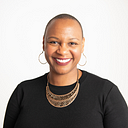When working with our clients to bring a social justice lens to their perspective and work, we use a set of questions that are based on Iris Marion Young’s Five Faces of Oppression framework. These questions are:
1. Whose labor is overused, undervalued, not compensated, under compensated? (This addresses exploitation.)
2. Whose experiences, perspectives, or bodies are separated or left out? (This addresses marginalization.)
3. Who is silenced? Who doesn’t participate? Who doesn’t feel worthy or belonging? (This addresses powerlessness.)
4. What cultures, experiences, or backgrounds are co-opted, exoticized, deemed strange/not normal, or erased? (This addresses cultural dominance.)
5. Who is being harmed physically, mentally, or spiritually? (This addresses violence.)
We recognize that the work of diversifying only addresses marginalization, usually without interrogating why it is needed in the first place. And the language of inclusion assumes that the place or space we are diversifying is a good place to be.
Since we refuse to be ahistorical or assumptive, after each initial question, we also encourage clients to ask:
- Why? What actions and conditions led to this oppression?
- What are we doing to address the root cause of this form of oppression?
- How can we restore power to those who have been denied or stripped of their power?
- How must we change our self-perceptions, relationships, community culture, and policies + practices to shift and share power?
These are our baseline questions that go beyond thinking about diversity and inclusion to get to the causes of oppression and how it shows up in our internally in our organizations and in the communities we serve.
When we come back to these initial five questions, we are often faced with the reality that oppression is by design. So the work to end it must be honest, disciplined, and purposeful.
Bringing new faces into broken places is not enough to bring about true justice.
We must commit to dismantling social hierarchies based on constructed racial, gender, and class identities — — tearing down what is has been flawed from the start. Simultaneously, we can design and build new spaces rooted in sharing power.
This is not only external work, but also personal work, for if we do not recognize how we have internalized beliefs in social hierarchies, we will rebuild them. We must retrain ourselves to think of power as abundant and create alternative communities that do not relegate valued resources to only a few.
This is possible. We have examples like the creation of the Combahee River Collective and the cooperatives of Ejército Zapatista de Liberación Nacional (Zapatista Army of National Liberation, EZLN). I’ve personally touched these new worlds in my own work with young people and community organizers. I have witnessed new world construction by consulting with social movement organizations. I have heard freedom dreams recalled by SNCC elders such as Charles Cobb.
Such examples of power-building and power sharing might only happen in a moment, a meeting, a weekend, or a year, but it is possible.
Ironically, my optimism stems from the responses I’ve heard to those first five questions about oppression. Those willing to answer them honestly and then dig further into the why are taking the first critical steps towards rebuilding new and just worlds.
